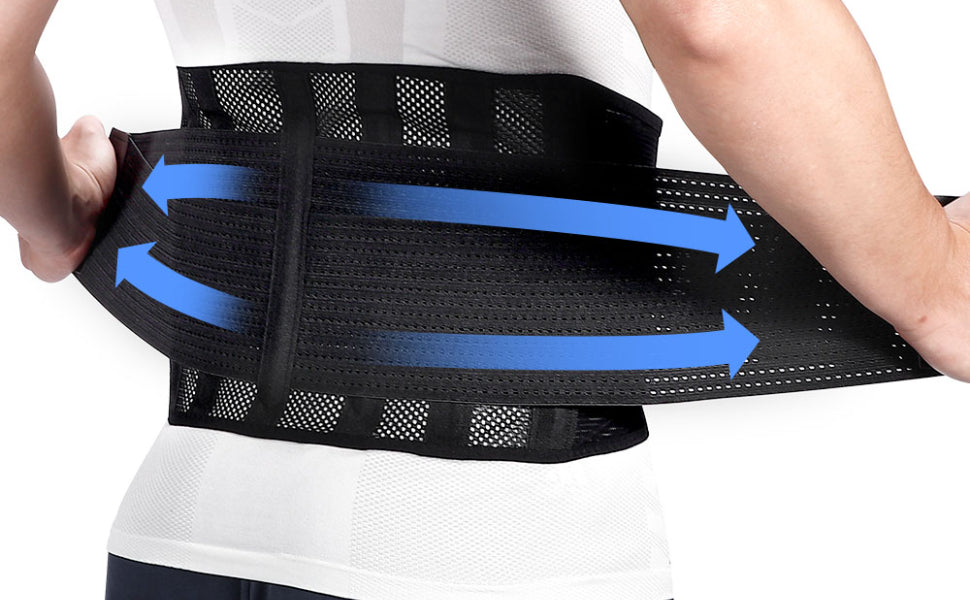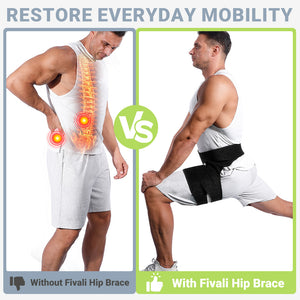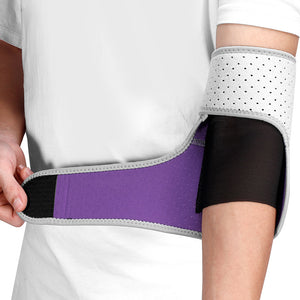How to Put on a Back Brace

Individuals suffering from back discomfort or recovering from an injury may benefit from wearing a back brace. The article discusses the necessity of wearing a back brace, how to choose the proper type and size, and how to put on the brace step by step. It also contains advice on how to use it effectively and when to seek professional assistance. Individuals can ensure optimum alignment and maximum comfort while wearing a back brace by following these tips.
fivalifitness.com
Choosing the Right Back Brace
The selection of a suitable back brace is critical for proper support and effectiveness. Here are some things to think about while choosing a back brace:
- Consultation with a healthcare professional: It is best to consult with a healthcare professional, such as a doctor or physical therapist, who can evaluate your unique needs and prescribe the best type of back brace for you.
- Back brace types: Lumbar braces, corset braces, and stiff braces are among the several kinds of back braces that are available. Each variety provides variable levels of support and may be appropriate for various ailments or injuries. Your healthcare provider can advise you on which type is ideal for you.
- Fit and size: To provide the most support and comfort, a back brace should be appropriately fitted. To ensure the correct size, measure your waist or the circumference of your torso as directed by the manufacturer or healthcare practitioner. Choose a brace that is neither too tight nor too loose.
- Adjustability: Choose a back brace with adjustable straps or fasteners. This allows you to tailor the fit and level of compression to your specific needs.
- Material and structure: Consider the back brace's material and construction. It should be constructed of long-lasting, breathable fabrics that give enough support without creating discomfort or skin irritation.
- Comfort and flexibility: A decent back brace should be comfortable to use for lengthy periods of time. It should allow for some flexibility and freedom of movement while still providing adequate support.
Preparing
There are a few things to take before putting on a back brace to guarantee a comfortable and effective fit. What you should do is as follows:
- Locate a secluded and comfortable space: Choose a clean, open space where you can put on the back brace without being distracted or obstructed.
- Remove any clothing or other impediments: Remove any clothing or things that may interfere with the positioning or fit of the brace. Belts, bulky sweaters, and jackets are examples of this.
- Adjust any straps or fasteners: Before putting on your back brace, check to see if any straps or fasteners need to be adjusted. Ascertain that they are properly aligned and prepared for use.
You can create an ideal environment for putting on your back brace and ensuring that it fits correctly and comfortably by following these preliminary steps.
Putting on the Back Brace

It's time to put on the back brace after you've prepared the space and adjusted any straps or fasteners. Here are the actions to take:
- Correctly position the brace on your back: Place the back brace on your lower back, with the bottom edge resting on your hips. Check that the brace is centered and parallel to your spine.
- Fasten all closures and straps in the following order: Work your way up from the bottom closure or strap. Tighten the straps or closures just enough to provide the garment a snug fit without creating discomfort or limiting ventilation.
- Make sure the fit is snug but not too tight: The back brace should fit snugly but not be too tight. Wearing it should allow you to move freely and breathe normally.
- Check for optimal alignment and comfort: Stand up straight and align the back brace with your spine. It should be pleasant and supportive without creating any pain or discomfort.
- Seek help if necessary: If you are having trouble putting on the back brace or adjusting the straps and closures, seek help from a healthcare professional or a trusted individual.
By following these procedures, you will be able to properly put on your back brace and ensure that it fits comfortably and provides optimal support.
Tips
Wearing a back brace correctly entails more than just putting it on. Here are some pointers to help you make the most of your back brace:
- Increase wear time gradually: If you're new to wearing a back brace, start by wearing it for shorter amounts of time, such as 1-2 hours at a time, then gradually increase the duration as you become used to it. This helps your body to adjust and avoids you from becoming overly reliant on the brace.
- Follow the steps outlined below: Wear and care instructions for your individual back brace should be read and followed. This ensures that you utilize it correctly and that its effectiveness is maintained over time.
- Wear the back brace for activities that require support: Wear the brace for activities that may strain your back or worsen your condition. Lifting large objects, engaging in physical exercise, or performing duties that require lengthy sitting or standing are examples of this.
- Maintain good posture: Maintain proper posture while using the back brace to maximize its effects. Stand tall, shoulders back, and stomach engaged. Avoid slouching or hunching forward, as this can reduce the effectiveness of the brace.
- Exercise and stretch as needed: A back brace is not a replacement for adequate exercise and rehabilitation. Consult a healthcare provider to decide which workouts and stretches are appropriate for your condition, and wear the brace during these activities as directed.
- Pay attention to your body: Consider how your body feels when wearing the back brace. Remove the brace and talk with a healthcare expert if you suffer increased pain, discomfort, or any other concerned symptoms.
- Maintain proper hygiene: Clean and care for your back brace according to the manufacturer's instructions to avoid odors and skin irritations. To maintain the brace clean and fresh, wash or wipe it down on a regular basis.
Always utilize a back brace as part of a comprehensive treatment plan under the supervision of a healthcare practitioner. It is not a stand-alone treatment and should be combined with other indicated therapies or interventions.
fivalifitness.com
*Disclaimer
The information provided in articles written by Fivali is intended for educational and reference purposes only. The content on this website (www.fivalifitness.com) is not intended to diagnose, treat, cure, or prevent any disease. We do not recommend self-diagnosis or self-treatment based on the information provided in our articles. Always consult a qualified healthcare professional if you have any concerns about your health or well-being.
If you are experiencing any symptoms or discomfort, we strongly encourage you to seek medical attention from a qualified healthcare professional. Only a licensed healthcare practitioner can provide an accurate diagnosis and an appropriate treatment plan tailored to your individual needs.
-
Posted in
Back pain causes, Healthy Lifestyle













